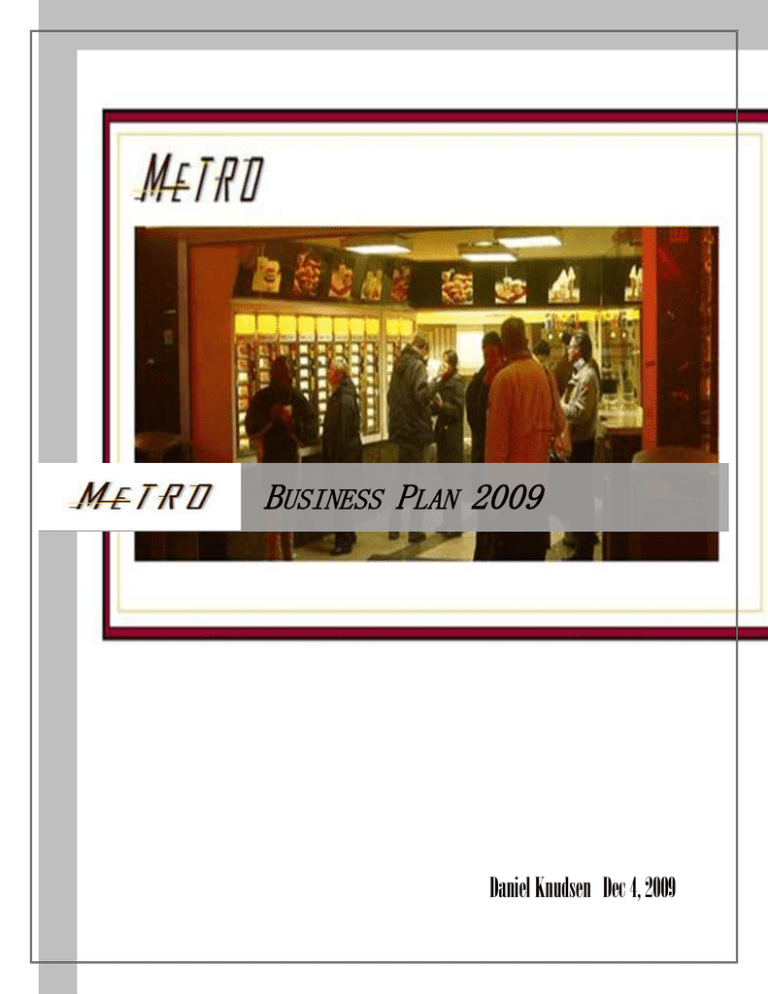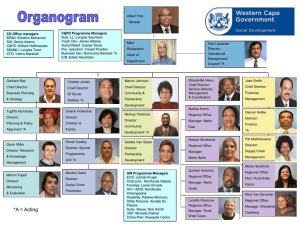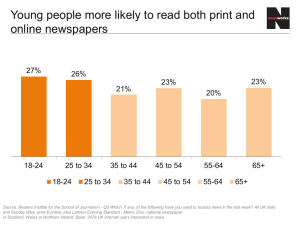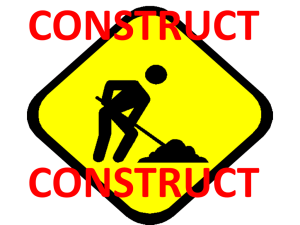Business Plan 2009
advertisement

BUSINESS PLAN 2009 Daniel Knudsen Dec 4, 2009 TABLE OF CONTENTS EXECUTIVE SUMMARY 3 1.0 INTRODUCTION 1.1 Industry Overview 1.2 Mission Statement 1.3 Goals and Objectives 1.4 Financing 4 4 4 4 2.0 OPERATIONS PLAN 2.1 Location 2.2 Floor Plan 2.3 Quality Control Program 2.4 Organizational Strategy 5 5 6 6 3.0 MARKETING PLAN 3.1 Competition 3.2 Target Markets 3.3 Product & Pricing Strategy 3.4 Promotional Strategy 7 7 8 8 4.0 FINANCIAL PLAN 4.1 Debt and Dividends 4.2 Investment Analysis 4.3 Ratio Analysis 4.4 Risk Analysis 9 9 9 10 5.0 CONCLUSION 11 LIST OF FIGURES Figure 1 Aerial View of Location Figure 2 Floor Plan Figure 3 Competitive Space Map 5 5 7 LIST OF APPENDICES Appendix 1 Organizational Structure Appendix 2 Draft Menu Appendix 3 Weekly Schedule 12 12 13 LIST OF TABLES Schedule 1 Dividend and Debt Schedule 2 Sensitivity Analysis Schedule 3 Income Statement Schedule 4 Capital Budget 14 14 15 16 2|Page EXECUTIVE SUMMARY The proposed business plan is for a sandwich and fast-eats shop at the University of Saskatchewan in Saskatoon. This incorporated business which is planned to be called Metro, will be located at the north end of Place Riel tunnels. The chosen location is readily accessible and receives a dense amount of traffic, and as such the most patrons will be aware of our presence upon entry into the market. The model is different than all the other or current options, as Metro will offer the quickest avenue to purchase food and will also offer a tastier selection than the current alternatives. A coin slot operated cooler will be set-up on both walls, thus allowing customers a total of four avenues in which to receive and pay for their food. As the owner, I will oversee the marketing, accounting, and general strategy of the business, while the cook would take on most of the responsibility to run day to day operations. Estimates derived from the marketing, operations and human resources plan were used for developing the financial model for Metro. The sales price of $8 is expected to grow at a straight rate increase due to the nature of coin operated mechanisms. The business is to grow by 15% in the first year, then 5% in the second, and 3% in the following two years. Similar stores of this nature tend to serve up and around 200 customers per day. Current conservative estimates signify a starting level of 150 customer base level throughout the first year. Worst case scenario, with the ability to be extremely flexible in terms of service and product offerings, would see levels of 120 customers. Meanwhile, for the best case scenario, capacity peaks at around 220 customers. It’s hard to judge if this will be easily obtained given no franchise name, but with a high quality and reliably convenient service it is easy to expect that Metro can get the same projections. The business intends to borrow $45,000 at 7%; this debt will be amortized over a five year period. Dividends will be distributed to the owner from the second year and on. The required rate of return on this business is for 20%. With the projected cash flows and an investment of $45,000, the investment return will be a premium salary and dividend payout. Given the ability of the operation to basically run itself and with less and less part-time hours to oversee business operations, this is an enticing offer as long as the prerequisite sales levels are obtained. The low start-up investment, easy exit ability, and a guaranteed level of sales make this a relatively safe investment. The only real risk could be associated with the converted machinery and subsequent costs associated in thereof. If the business were to go under, this would still be considered a minimal loss. 3|Page 1.1 INDUSTRY OVERVIEW Industry averages for gross profit margins are 50%, and wages as a ratio per sales are usually 25%. Considering the streamlined format of Metro, these numbers can serve as a good basis, but should vary minimally with gross profit margins being a bit higher and actual wages as per sales a bit lower. As manager I have included my wage into the equation even though this brings the total to an unusually high ratio of 32% wages per sales. As long as the market isn’t overly saturated with competitors, a food retail outlet that serves quality food at a reasonable price will be considered a low risk venture. As in the case at the university, line ups and backlogs of consumers are a constant reality, so there is no doubt that another food outlet would be welcomed. 1.2 MISSION STATEMENT “ Serving healthy gourmet combos and alternatives to busy bodies. ” 1.3 GOALS AND OBJECTIVES Fast and convenient means to satisfy hunger while offering a reliably consistent highquality and differentiated service To achieve a substantial return within the first few years of operation Build a reputable brand and successful business model that may be duplicated Maintain a clean food handling environment Run an effective and efficient inventory system 1.4 FINANCING The opportunity would only need a $45,000 co-signed loan and would be repaid within 5 years. No partners are needed and hence I would be the sole proprietor of the business, if the prospect came up for a partner, presumably a cook, a stake into the venture would then be equated given the value of the current investment based on the sum of future revenues. The financial projections for this and the return on investment look very promising, this is considering the low initial start-up costs and ability to repay within the first few years. A big portion of the loan cost would go to renovation expenses and equipment expenditures. Along with wage based employees and a starting inventory that will be used before it has to be paid, there will be enough sales and subsequent cash flow to cover all operating expenses. 4|Page 2.0 OPERATIONS PLAN 2.1 LOCATION North End of Place Riel Tunnels at the University of Saskatchewan Figure 1 2.2 FLOOR PLAN 18’ X 28’ Lease Figure 2 5|Page 2.3 QUALITY CONTROL PROGRAM Adhering to University policies and guidelines, the treatment of employees, handling of food, disposal of chemicals, and all other matters will be upheld. Quality control systems will be put in place to ensure that the food and cleaning of the store will result in zero contamination. Other such training programs would include; HACCP, WHMIS, customer service, and objective training. Highly motivated employees whom will add value to the brand and image of the store will be required. By offering premium incentives for employees through either offering a partner type role or allocating bonuses, high employee involvement will be maximized. Hiring a knowledgeable and courteous cook whom would be both accountable for inventory and responsible for maintaining an enjoyable work environment would be a top priority. 2.4 ORGANIZATIONAL STRATEGY There will be a full-time cook and two part-time cashier/prep workers being paid premium wages, and as well myself as the manger being paid a salary and dividends which would kick in presumably in the second year. There can presumably be a decline in sales during the summer months as fewer students are attending classes. During this period a reduction of hours and work needed would ensure the business is still profitable during this period. Other than this summer decline, an average day would consist of 1) a part-time employee opening up, cashing in, prep work, inventory stock, and serving customers 2) a cook coming in a little later and continuing with prep work and setting up for the day 3) about half way through the day the other part-time employee would show up, prep work, then take over customer and inventory duties until cash out. See Appendix 1 for a Work Schedule SCOPE AND RESPONSIBILITIES The Owner/Manager will oversee all major business functions. Accounting, marketing, business strategy, and maintaining an adequate cash flow for the venture will be the main areas of focus. Monthly duties would include financial reviews and an objective analysis which would be used to see if the business has areas to improve. Other areas of interest would be in operations and supply management which could see menu changes, human resource consultation, etc) The Cook/ Assistant Manager will oversee procurement, order supplies when needed, and be responsible for the overall efficiency and quality of products. In effect the cook would run the kitchen and its day-to-day operations (scheduling, inventory, menu, supply counts and receiving). Semi Full-Time Employee duties would include the service of customers, register operation, cashing in and cashing out, stocking and prep work. These part-time employees, whose hours would be flexible depending on how busy the business day would also have daily duties including the cleaning of store counters, floors, kitchen, and the re-stocking of inventory. See Appendix 2 for Organizational Chart 6|Page 3.0 MARKETING PLAN 3.1 COMPETITION The food retail market in and around university grounds is very intensive. There are roughly a dozen direct and indirect competitors for the university population to choose their food purchases from. As reflected in figure 3 below; service, price, and the overall quality of food differs to a degree. The businesses within the model are one’s that are in direct competition for market share with the proposed venture. Given that there are only two competitors in the specific area where the business is poised to set up, there is an opportunity to seize a proportionate market share. A lack of service and an apparently high number of backlogged customers will assure the projected targets. A differentiated menu will offer unique and healthy combinations which will help establish a repeat consumption among students. Figure 3 3.2 TARGET MARKETS There are 8000 Arts and Science students on campus, this is a considerably large population and accounts for 45% of the overall population. Even though marketing efforts will be geared to the whole population, these 8000 will serve as the main target market. Similar shops serve over 200 sandwiches a day, and achieve gross margins averaging 50%. This is a solid opportunity considering the minimal capital requirement and the low integration costs involved. The target market will mainly be the Arts and Sciences University population. There is an opportunity to attract more of total university base, and will attempt to do so with awareness and marketing campaigns. We will not target any specific group, as the products and service will appeal to everyone. The store’s format and design will garner the attention of the younger segments, but nonetheless there should be a reliable and reoccurring purchase across all segments young and old. As mentioned before, the store will offer the quickest means to obtain food. This is the biggest advantage against the uniformly slow competition in the market. With two coin-operated slot coolers, the customers can receive a meal within seconds of entering our location. As compared to the usual 5 to 10 minute wait amongst other locations; our business will be the avenue to serve time crunched customers. 7|Page 3.3 PRODUCT & PRICING STRATEGY Metro’s main success will be in the layout and format in which it will serve customers. Line-ups and backlogs continue to be a problem for students who need to get food and eat quickly. Metro will offer the fastest and most convenient means to satisfy hungry time crunched students, while offering a reliably consistent and differentiated service. In relation to the other direct competitors; Metro will serve high quality food, offer the lowest line ups, and establish a moderate availability compared to all relevant competitors. Selection of a high traffic area will bring consumers to the outlet and a suggested price of $8 for combos would be the base charge. For sandwiches in the coolers, a straight base rate of $8 would be wise. There is a lot of flexibility in this store’s format in case or in need to reconfigure, but given the coin slot operation of the machines this straight rate is quite functional. The menu which will be later determined, will border on the higher end offerings currently available. Further research using focus groups, questionnaires, and most notably an involved discussion with the main cook will solidify the end menu. See Appendix 3 for a Draft Menu 3.4 PROMOTIONAL STRATEGY Since the business will be brand new and will offer a new interesting service, I plan to get free press from The Sheaf and Planet S via new business forum. Contacts that have been established with these editors and writers guaranteeing an insert into these University based magazines. In addition to this free advertising, a plan to distribute menus, flyers, logos, and stickers around campus will ensure that the store will be known and familiar to those who go to the university. Over time with highly regarded and efficient service, I hope to establish a brand which can effectively compete with all the other competitors. Word of mouth will undoubtedly be an integral part of success. An ability to re-configure product/service offerings, provide an extended 24 HR availability, and serve customers using the most efficient means should correlate into positive brand image and consequent referral to the store. No significant investment will be made into marketing except for the store’s signs, brand, and design. There is no need to go off campus to target customers as the University is the only segment for the store will target. 8|Page 4.0 FINANCIAL PLAN The financial plan includes 5 year projections utilizing an income statement, balance sheet, and cash flows. The estimates have been derived from the following: cost of goods sold, revenue estimates, operating expenses, and a capital budget. The inflation rate has been taken as 3% and the growth in sales prices will roughly match this inflation but on a straight base increase every two years. Metro’s location alone will be it’s most advantageous element. Consumers pass by the shop by means of a highly dense and traffic orientated position. To supplement this obvious advantage, a moderate advertising campaign in and around the campus will help to draw the projections garnered in the financial plan. After starting off at a modest 150 customers per day, the business will grow by 15% in the first year. After that, the sales growth will start stabilizing at 5% to 3%, and eventually meeting a figurative capacity of 220. 4.1 DEBT SCHEDULE AND DIVIDEND POLICY I will be borrowing $45,000 at a rate of 7%. The current rate of borrowing is low and can be counted on to remain constant for Metro. The debt will be amortized over a 5 year time period. The total payments for each year over the projected five years schedule can be seen in Schedule 1 of the financial section. The business will start distributing dividends in the second year of operations. Since I will be the only owner, all excess cash in the system will be divvied up during the appropriate times. 4.2 INVESTMENT ANALYSIS A more unorthodox approach was taken when analyzing the return on investment for Metro. The value and worth of operating this business will come down to the amount of time needed to manage and a mix of premium salary/ dividend payouts. The investment analysis as shown in Schedule 2 of the financial section shows the wage per hour rates to be achieved given the base level of sales. Considering this as a less risky business, the required rate of return would be 20%. With the projected cash and an equity investment of $45,000, projected cash flows would produce a value of $117,885 (Net Present Value). 4.3 RATIO ANALYSIS Metro will have a positive net profit margin in the first year of 2%. This figure improves throughout the years, increasing to 6% in the second year and then eventually to 9%. On a capital investment of $45,000, the return on assets and return on equity produce positive figures in all years. Within the 2nd year return on equity peaks at just over 2, while the return on assets peaks at just over 1 in the 5th year. However, the most functional of financial statistics would be the relative wage per hour. 9|Page 4.4 RISK ANALYSIS For analyzing the risk of this business, some critical factors have been identified which would effectively determine the health of the business. The three most critical factors are; number of customers, prices, and maintaining an above average profit margin on meals. In order to cover the risk from the first critical factor, Metro will offer a great value to customers. The business will provide healthy, proportionate, and delicious gourmet combos at a reasonable price. Word of mouth and referral amongst friends will entrench the business as a mainstay and preferred choice amongst the competition. For the next critical factor, the business would be able to re-configure product and price offerings in an attempt to utilize paid employees on site. Prices will be on par with the competition and wages which would be directly correlated to the amount of service needed, could be either increased or decreased given the amount of customers being served. Lastly, an efficient inventory management system will be needed to achieve the above average profit margin. SCENARIO ANALYSIS Scenario analysis has been performed on the critical factors and the best case, base case, and the worst case have been studied with varying impact. A worst case scenario with 120 customers would result in a loss of $10,000. However, if the number of customers drops this low a wage savings could in theory be obtained. Base case allows for a conservative estimate at 150, and this would provide an average return for the owner/manager. A best case scenario of 220 customers a day and at capacity, would return a very high premium for the owner. A wage/salary correlation of $80 per hour would be achieved at this state. SENSITIVITY AND BREAKEVEN ANALYSIS A breakeven analysis has also been done. Critical variables and levels have been calculated for the quantity breakeven of the business. In order to meet the breakeven on a quantity level, the business would have to only attract 136 customers per day instead of 150. A price level reduction to $7.14 for the starting base year per customer levels would also obtain this break even mark. If gross margins on meals were to decrease to 50%, a loss of $5000 could accumulate in the first year. 10 | P a g e 5.0 CONCLUSION This is an excellent opportunity because there appears to be a market imperfection. Routine line-ups are a sure sign that customers can be better served. The flexible and compact format of the store can cut cost inefficiencies and wait times. There has been a gradual increase of service, but over the years at the U of S, I have noticed that service and food could be improved. By building a strong image and brand equity through a higher quality experience, Metro has a significant chance to gain a proportionate share of the market. Business longevity will hinder on; gaining the 136 customers per day, maintaining high gross margins on meals, and the retention of a motivated cook. If for the above or other reasons I am forced to withdraw from the venture, selling of the assets and closing down the business could only take 2 weeks. In addition to the initial investment being quite low, there will be a chance to sell most of the equipment albeit at a reduced price. A very high wage rate per actual hour worked is the greatest value to me as an investor. Considering the premium return on the risk, this is an enticing opportunity. 11 | P a g e APPENDIX 1 APPENDIX 2 WEEKLY SCHEDULE (HOURS) OWNER/ MANAGER CHEF/ ASSISTANT SEMI FULL-TIME 1 SEMI FULL-TIME 2 8:00 AM- 6PM 7:00 AM- 2:00 PM 12:00 PM-7PM TUESDAY 8:00 AM- 6PM 7:00 AM- 2:00 PM 12:00 PM-7PM WEDNESDAY 8:00 AM- 6PM 7:00 AM- 2:00 PM 12:00 PM-7PM 8:00 AM- 6PM 7:00 AM- 2:00 PM 12:00 PM-7PM 8:00 AM- 6PM 7:00 AM- 2:00 PM 12:00 PM-7PM ( SALARY/PROFIT) MONDAY 10AM-4PM THURSDAY 10AM-4PM FRIDAY SATURDAY SUNDAY TOTAL HOURS 12 (AT LOCATION) 12 | P a g e 47.5 32.5 32.5 APPENDIX 3 METRO MENU: PROPOSAL DRAFT READY • • • • • MADE - COOLER B.A.L.T – bacon, avocado, lettuce, tomato, mayo and lemon tinge Shrimp and Vegetable Wrap – romaine, mushroom, onion, olives Crab Salad Sandwich – herb oil, shredded cabbage, herbs Chicken Pepper – red and green pepper, cajun spices Club Classic – honey ham, turkey, roast beef MADE TO GO - KITCHEN • Fig and Prosciutto – mozza or fontina, arugula • Fish Sandwich – cabbage, cilantro, tomato, lime juice and chilli powder, garlic • Honey Garlic Roast – simmered beef and bbq sauce melt • Grilled Cheese – pear slices and bacon • Stir Fry – rice beef or chicken • • • Breads: Toast, Whole Grain, Sub, Panini grilled, Ciabatta, Croissant Sauces: Ranch, Italian, BBQ, Mayo, Hummus, Dijon and Honey Mustard Cheeses: Provolone, Mozza, Cheddar, Swiss, Pepper Jack • Combos: filled w/ side frites and/or veg pkg DRY/ COOL SHELF • Apple Crisp, Lemon Meringue, Saskatoon Berry Pie • Double Dark Forest Cake • Italian, Greek and Caesar Salad 13 | P a g e SCHEDULE 1 DIVIDENDS & SALARY Hours $35,000.00 30 Average $56,000.00 $55,000.00 20 $60,000.00 18 $65,000.00 18 $65,000.00 18 0.75 0.5 0.45 0.45 0.45 Hours (Year) 1410 940 846 846 846 Salary Rate $24.82 $58.51 $70.92 $6.83 $76.83 2012 2013 DEBT AMORTIZATION SCHEDULE Year Term 5 2011 Beginning Balance Addition 45,000 37,175 - 28,802 - 19,843 - 10,257 - Payment 10,975 10,975 10,975 10,975 10,975 Interest 3,150 2,602 2,016 1,389 718 Princ. Reduction 7,825 8,373 8,959 9,586 10,257 Ending Balance 37,175 28,802 19,843 10,257 2014 2015 0 SCHEDULE 2 SENSITIVITY ANALYSIS Customers Net Income 120 -10,605 136 0 150 7,384 173 23,666 181 27,863 187 35,560 192 38,661 14 | P a g e 55% Gross on Meals 120 -10,605 136 0 150 7,384 173 23,666 181 27,863 187 192 35,560 38,661 50% 120 136 150 173 181 -21,287 -12,394 -4,613 10,477 13,235 187 192 19,610 22,226 SCHEDULE 3 INCOME STATEMENT For the Year Ended 2011 2012 2013 2014 2015 Revenues 303,750 368,564 387,155 419,820 432,350 Cost of Goods Sold 130,183 159,720 168,018 182,464 188,012 Gross Profit 173,567 57% 208,843 57% 219,137 57% 237,357 57% 244,337 57% Lease 22,680 23,360 24,061 24,783 25,527 Wages 101,825 116,084 120,174 127,360 130,117 Repairs/Maintenance 2,000 2,000 2,000 2,000 2,000 Employee Benefits General Supplies Marketing Incorporation Fees 10,024 16,500 5,500 250 12,163 18,000 2,000 100 12,776 19,200 2,000 100 13,854 20,500 2,000 100 14,268 21,000 2,000 100 Insurance 900 927 955 983 1,013 Capital Cost Allowance 2,000 3,600 2,880 2,304 1,843 Interest Expense 3,150 2,602 2,016 1,389 718 Total Expenses 164,829 180,836 186,162 195,274 198,585 Operating / Marketing Expenses Net Income B4 Taxes 8,739 28,007 32,974 42,082 45,752 Income Taxes 1,355 4,341 5,111 6,523 7,092 Net Income 7,384 23,666 27,863 35,560 38,661 - 7,384 11,050 13,913 19,473 7,384 23,666 27,863 35,560 38,661 - 20,000 25,000 30,000 30,000 7,384 11,050 13,913 19,473 28,134 Beg RE Net Income Dividends End RE 15 | P a g e SCHEDULE 4 CAPITAL BUDGET Equipment: 2 Large Coolers Converted 15,000 2 Med Dry Shelves 3,000 Full Size Refrigerator Counter-Top Freezer Electric Grill and Deep Fryer Oven Dishwasher Cash Register/ Debit Counsel Industrial Microwave 2 Cash/Coin Machines Kitchen Ware 1,500 1,300 1,000 1,000 800 Drink Machine 1,000 Sinks 400 400 1,300 1,100 400 28,200 Building Design and Modifications: Signs, Panels, Wall 14,000 6 Sections Counters 1,800 Cupboards 1,000 16,800 Total Capital Costs 45,000 16 | P a g e




